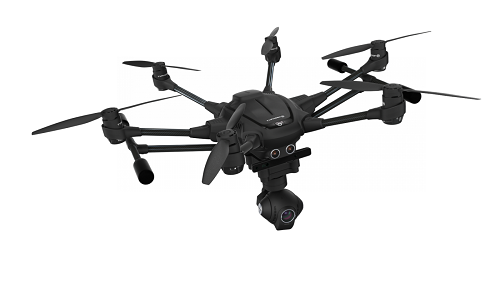
Pentagon Plans Citywide Drone-Catching system for tracking small drones
The U.S. government is a step closer to deploying a new system for tracking small drones flying over busy cities. But there’s no guarantee it will be affordable.
The Defense Advanced Research Projects Agency’s two-year-old Aerial Dragnet initiative could begin testing in 2018, an agency official told The Daily Beast.
If it works and the government funds it, Aerial Dragnet could help military commanders and law enforcement officials keep tabs on drones zipping through urban battlefields or flying over densely populated city neighborhoods in the United States.
And the new drone-tracking system might even include… unmanned aerial systems, or UASs, carrying sophisticated sensors. That’s right. Drone-hunting drones.
“Commercial websites currently exist that display in real time the tracks of relatively high and fast aircraft—from small general aviation planes to large airliners—all overlaid on geographical maps as they fly around the country and the world,” ex-program manager Jeff Krolik said in Aerial Dragnet’s official announcement in 2016. “We want a similar capability for identifying and tracking slower, low-flying unmanned aerial systems, particularly in urban environments.”
Aerial Dragnet could involve a network of “surveillance nodes,” each monitoring an area the size of an urban neighborhood, according to DARPA. “Using sensor technologies that can look over and between buildings, the surveillance nodes would maintain UAS tracks even when the craft disappear from sight around corners or behind objects.”
One goal is to give U.S. troops advance notice of incoming enemy drones and help military aviators avoid air-to-air collisions over the battlefield.
But Aerial Dragnet has domestic uses, too. “The system could ultimately find civilian application to help protect U.S. metropolitan areas from UAS-enabled terrorist threats,” DARPA stated.
After two years of development, Aerial Dragnet is in a transitional period in 2018. Krolik left the program and the new program manager, John Waterston, told The Daily Beast his team is in a “data-collection phase” in January.
DARPA has already selected three organizations—the University of Washington and defense firms Lockheed Martin and Raytheon—to test out possible drone-tracking technology as early as this year.
For cops and commanders, Aerial Dragnet can’t come fast enough. Criminals and militants have begun figuring out how to use cheap, quadcopter-style drones to exploit gaps in existing security infrastructure and military defenses.
In October, police in Salamanca, Mexico, pulled over four suspected cartel members in a pickup truck. In the truck along with the usual heavy weaponry, the cops discovered an unmanned aerial vehicle fitted with what they described as a “large explosive device” and a remote detonator.
It’s possible a cartel planned to send the drone on a lethal suicide mission targeting a rival drug gang or law enforcement.
Meanwhile in Syria, Islamic State militants and anti-regime rebels have developed sophisticated drone tactics, launching quadcopters and other small drones on suicide runs or to delet small bombs.
On Jan. 5, a swarm of explosives-laden drones, apparently controlled by Syrian rebels, attacked two Russian bases in western Syria. Russian defenses destroyed or disabled all of the bots before they inflicted any damage on the bases, according to the Kremlin.
The recent spate of drone assaults hasn’t changed DARPA’s approach to Aerial Dragnet. “But they have shown the need for persistent surveillance and tracking of small UAS in urban environments,” Waterston said. “Aerial Dragnet wasn’t created with any one specific theater in mind but an understanding that the increasing access to commercial drones will increase their use in tactical operations by our adversaries.”
But the same dynamic that’s driving the bad guys’ escalating use of small drones could undermine the U.S. government’s effort to track those drones: Cost. Terrorists and cartel members can buy a quadcopter online for a few hundred dollars and rig up a cheap bomb for a few dollars more.
Right now, the enemy can afford many more drones than governments can afford drone-monitoring systems. To keep Aerial Dragnet affordable on a large scale, DARPA is asking contractors to develop technologies whose acquisition cost is less than $10,000 per 20 square kilometers.
In other words, an Aerial Dragnet system for all of Manhattan’s roughly 60 square kilometers should cost no more than $30,000 to buy.
It won’t be easy to develop potential drone-hunting drones that cheaply, Waterston acknowledged. “To achieve that metric requires nimble tech development.”

